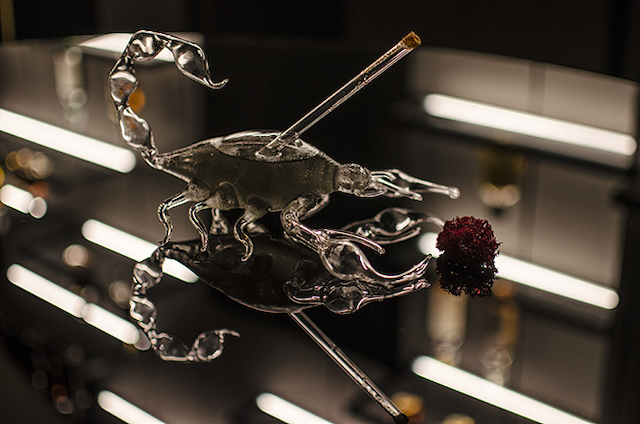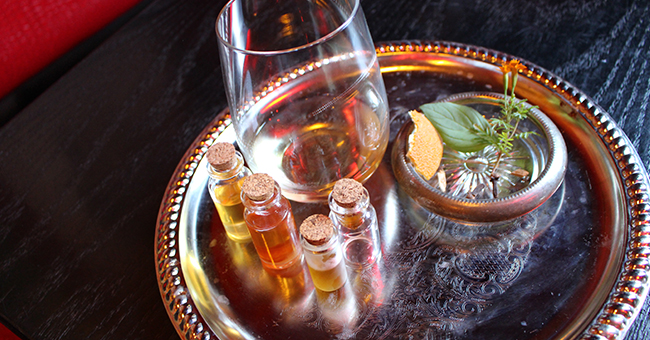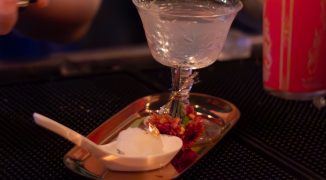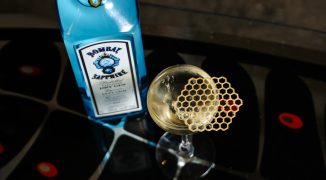Vermouth, that fortified wine long-popular in countries like Spain, France and Italy, is rife with potential: for creativity, for experiences and for experimentation. Beverage directors and bartenders are inventing new ways to serve it, while chefs and bartenders are collaborating on new, house-versions of vermouth entirely. Given its versatility, it’s no surprise, really, that there seem to be endless ways to make your individual mark on vermouth service. Martinis and Manhattans, step aside — vermouth itself is taking center stage.
Vermouth is made from wine, and it’s important to remember that when looking for the right vermouth for the job.
“Categorizing vermouth only as red, dry or amber is limiting, it is like categorizing wine only as red, white and sparkling without considering regions and grapes,” says Roberta Mariani, global brand ambassador for Martini. “The botanicals and the grapes have the same important role as the terroir. A red vermouth, for example, can be sweet, dry, herbal, floral, more or less bitter, according to the recipe of different brands. This is what makes the vermouth category so interesting, but sometimes not easy to understand.”
“Vermouth is no longer just a complementary ingredient for classic cocktails. Bartenders like to play with it. Simone Caporale served vermouth and imaginary pizza during the Berlin Convent Bar, vermouth and tonic has become the healthy aperitivo alternative to the spritz, and bartenders are starting to keep their vermouths in the fridge, giving the products the respect they deserve,” says Mariani.
Sitting on a patio on a beautiful sunny afternoon, sipping on a glass of vermouth and snacking on olives is a quintessential Spanish experience. Aaron McKay, executive chef at Mercat A La Planxa in Chicago, found that out firsthand. He first decided to experiment with creating a house vermouth after vacationing in Barcelona this past spring.
“That was one of my favorite things, just sitting outside in the sun, eating olives and having a vermouth on ice. And so when I got back, it was like, we really dove into which vermouths we were offering and started looking into how we could make our own,” says McKay.
That began a long process of trial and error to determine which botanicals needed to be included to make a vermouth that worked for them.
“[T[he idea is that you don’t want any one of those elements to really smack you in the face, you want it to be this blend, sort of like curry or mole, where it kind of becomes something greater than any one of the parts,” says McKay.
McKay also adds red vermouth to the brine for cornicabra olives, along with other aromatics. Each varietal of olive at Mercat A La Planxa gets its own brine or preparation, designed for the specific olive, of course, but also keeping in mind that they like to serve them with the house vermouth, on ice, as a sort of tribute to McKay’s experience in Spain.
 At Damascegliere in Milan, vermouth is presented in unique and unusual vessels. Photo courtesy of Damascegliere.
At Damascegliere in Milan, vermouth is presented in unique and unusual vessels. Photo courtesy of Damascegliere.
In Milan, at Damascegliere, Mattia Pastori serves the bar’s signature Martini di Milano in a glass rimmed with a Campari reduction. Pastori says the reduction adds an unusual bitter and caramelized element. This technique would also work with vermouth, so long as the vermouth used is a sweet version, but will impart a “vegetal and spiced” flavor to the resulting cocktail. He is also working on a sake-infused vermouth for a version of a Negroni that will include flavors of wasabi and ginger.
Naren Young, managing partner at Dante in New York City, says that their vermouth service is partially about championing an under-appreciated (here in the United States) product, while also trying to do something different, but not too complicated. It consists of a glass of Noilly Prat Dry, which is on tap at Dante, served very cold over frozen grapes and topped with sparkling water, which gives the aperitif a bit of a spritz vibe.
“From more of a cerebral point of view, vermouth is made from grapes and we’re serving it on grapes, so there’s a really nice kind of [syllogism] there, that kind of ties the whole thing together,” Young says. “All of these small elements add up to make this drink really more than a sum of its parts, so, you know, we really thought of every element of how we could sell vermouth in a way that gets people really curious and intrigued about what vermouth is, why do we serve it like that. It’s really been a hit for us.”
https://instagram.com/p/BFZIVtWJyns/?taken-by=dantenewyorkcityrn
Back in Chicago, the team behind Fat Rice and The Ladies’ Room sort of accidentally stumbled on their version of ‘vermouth’ while working on a white sangria.
“We were making a white sangria and we had this galangal vodka which hadn’t been used in anything, and initially we were sort of thinking of it like just a ginger liqueur, but in adding it to white wine to make a white sangria, immediately we were like, ‘this tastes like vermouth,’” says beverage manager Annie Beebe-Tron.
The Ladies’ Room’s ‘vermouth’ is a DIY, choose your own adventure kind of cocktail. Once ordered, out comes a glass of white wine as well as accompanying assorted house tinctures, cordials, bitters and a variety of dry ingredients (think orange peels and dried spices).
“… Especially if a couple is getting it, then they can pass the glass back and forth, they add a little bit of galangal vodka or they might put in the orange peel, or the cloves, and kind of, they’re each smelling it and ‘oh, I like that’ or ‘oh, maybe put a little bit more of this,’” says Abe Conlon, chef and co-owner at Fat Rice and The Ladies’ Room. “We have designed it too, where if you have those people that really don’t want to experiment, be curious, try to understand flavors and aromas and mess with them, you could really just dump it all together and let it chill for a minute or two and just have a nice glass of homemade vermouth.”
Everything hinges on the wine itself, which Beebe-Tron and Conlon selected to match the botanicals used for the drink. While the original creation was somewhat serendipitous, Conlon says they may use the same format in the future, now that they know it works well, changing it up to create a red vermouth or even a rosé version.
At The Ladies’ Room, the interactive element is an important part of their ‘vermouth’ service.
“Consumption and revelry are great, but there [are] other people that want more to their experience, you know, they want more than just great service and great food and great drinks, they want to be intellectually stimulated, they want to share an experience with somebody else, they want to have a memory, you know,” says Conlon. “And, I think an interactive — within reason — an interactive cocktail is not a bad thing.”
From simple and elegant, to complex and sophisticated, chefs and bartenders are turning more of their attention toward vermouth. As Young points out, other aperitifs and digestifs have gotten their moments in the sun. Maybe vermouth will be next.




